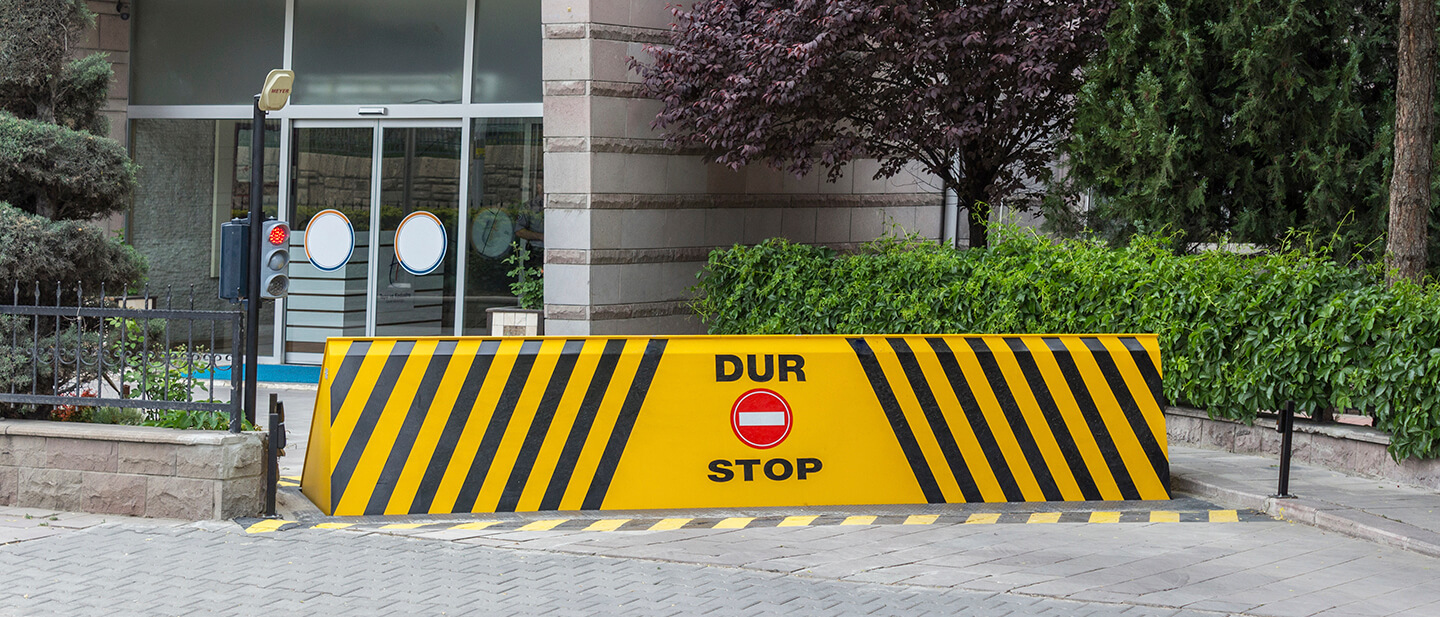Dosson (TV)
Traffic management in metropolitan and/or sensitive areas may require the restriction or blocking of the circulation of cars, vans and trucks.
Road blockers and bollards become an essential safety tools to protect structures located in high risk areas and safeguard the people who frequent them.
It is important to know the characteristics of these devices and the innovative solutions that allow us to install them easily, always maintaining the maximum level of safety.
Road bollards and road blockers: where and how to use them
We can use bollards to prevent vehicles from parking in private areas or in areas where parking is not permitted or, again, to ward off access to metropolitan areas such as restricted traffic areas. In this case, they are called parking bollards.
Furthermore, we can use these road devices to secure places at risk of intrusion by ram vehicles, such as trucks and cars.
The CAME offer includes different types of high-security bollards according to the application contexts and the required levels of protection. These supports can be fixed, retractable, automatic, semi-automatic, removable, etc.
It’s possible to install series of bollards to create barriers capable of effectively blocking vehicles, yet always allowing pedestrians to transit.
When the design request is to create a barrier with no escape routes, the ideal solution is the road blocker, a motorised steel platform that rises from the ground and completely stops vehicle access.
It’s possible to use the two security systems together to delimit areas where cars and work vehicles cannot pass or park without authorisation.
Where are these types of barriers installed?
Depending on the characteristics of the environments and customer needs, we can install road blockers and bollards in different contexts that require precise traffic control and possible securing of the area.
Here are some examples of places where these deterrent and protection systems are:
• Public spaces and pedestrian areas
• Transport infrastructure (airports, railway stations, and underground)
• Hospital centres
• Military areas
• Sensitive sites
Pay attention to the installation of road blockers and bollards
Road blockers and bollards, which have to go down to the level of the asphalt and require the placement of plumbing and electrical systems, may need invasive installation work.
It is therefore advisable to carefully evaluate the total dimensions of the road blockers and bollards and the extent of the excavations necessary to install them: this is essential to prevent an impact on the existing underground infrastructure.

The safe road blocker with reduced installation space: HRB shallow mount
HRB shallow mount is the road blocker designed and built by CAME to provide maximum protection against the intrusion of unauthorised vehicles with minimal installation work.
This solution requires an excavation of just 40 centimetres deep and guarantees resistance to the impact of a vehicle weighing 7.35 tons hitting the barrier at a speed of 50 miles per hour, equivalent to 81.4 kilometres per hour.
Crash tests have shown that the HRB shallow mount keeps working even after such a violent impact.
Thanks to its design characteristics, the CAME road blocker has obtained important certifications:
• ISO IWA 14 – 1:2013 Blocker V/7200 (N3C)80/90:1.3
• BSI PAS 68:2013 Blocker V/7500(N3)/80/90:-2.2
• ASTM F2656-18a Barrier Rating C750/7200 – Penetration Rating P1
We designed it to close level to the ground and resist the passage of vehicles on its surface for a long time. In routine operations, the up and down movements have a time range between 3 and 6 seconds; however, the quick emergency lifting function is available and raises the road blocker in 1.5 seconds.
It is ideal in metropolitan and urban contexts, as we designed it to last over time and withstand intense cycles of use and stress.

